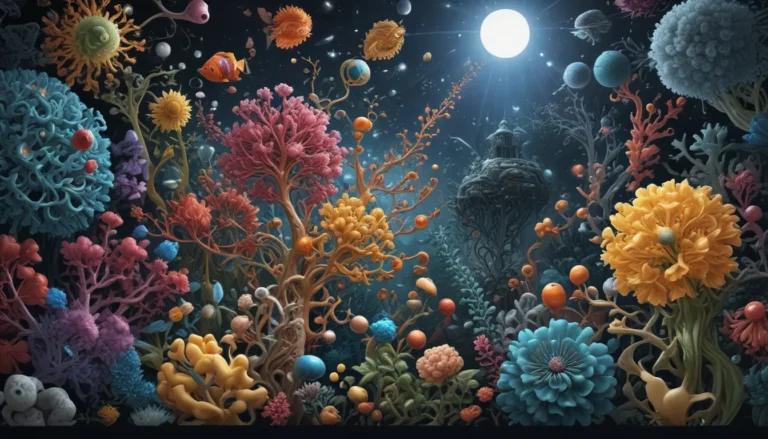A Note About Images: The images used in our articles are for illustration purposes only and may not exactly match the content. They are meant to engage readers, but the text should be relied upon for accurate information.
Nitrification, a captivating biological process essential for the global nitrogen cycle, holds the key to sustainable ecosystems and agriculture practices. In this article, we will dive into the fascinating world of nitrification, exploring 10 intriguing facts that shed light on this vital phenomenon. From the discovery of nitrifying bacteria to its impact on soil fertility and aquatic habitats, join us on a journey to unravel the mysteries of nitrification.
The Significance of Nitrification
Nitrification stands as a crucial step in the natural nitrogen cycle, converting ammonia into nitrites and nitrates, essential compounds for plant growth and nutrient recycling. This process plays a vital role in sustaining ecosystems and agriculture practices, highlighting its importance in environmental conservation.
The Bacterial Players in Nitrification
Two types of bacteria, namely ammonia-oxidizing bacteria (AOB) and nitrite-oxidizing bacteria (NOB), are the driving forces behind nitrification. AOB convert ammonia into nitrites, while NOB further oxidize nitrites into nitrates, completing the nitrification cycle.
Environmental Conditions for Nitrification
Nitrification thrives in aerobic environments with ample oxygen levels. Typically occurring in soil, water, and wastewater treatment systems, nitrification requires specific environmental conditions to facilitate the conversion of ammonia into nitrites and nitrates.
Nitrification in Wastewater Treatment
Wastewater treatment plants harness nitrification to remove ammonia from sewage, transforming it into less harmful nitrates through the nitrification process. This application showcases how nitrification contributes to creating cleaner and safer water sources.
Temperature’s Influence on Nitrification
Temperature plays a crucial role in the rate of nitrification, with colder temperatures slowing down the process and warmer climates speeding it up. Controlling temperature in various applications becomes essential to optimize nitrification efficiency.
The Impact of Nitrification on Water Quality
Excessive nitrates resulting from agricultural runoff or untreated wastewater can enter water bodies, leading to eutrophication and posing risks to aquatic life. Understanding and managing nitrification are vital to prevent water pollution and preserve aquatic ecosystems.
Inhibitors of Nitrification
Certain substances such as heavy metals, pesticides, and high levels of organic matter can inhibit the activity of nitrifying bacteria, disrupting the nitrification process. Awareness of these inhibitors is crucial for maintaining the efficiency of nitrification in various settings.
Symbiotic Relationships with Nitrifying Bacteria
Leguminous plants like soybeans and peanuts form a symbiotic relationship with nitrogen-fixing bacteria, converting atmospheric nitrogen into a usable form for the plants. This partnership highlights the interconnectedness of plant-microbe relationships in nutrient cycling.
Nitrification in Aquarium Filtration
In aquariums, nitrification plays a critical role in maintaining water quality by converting ammonia from fish waste into nitrites and nitrates. Beneficial bacteria colonize the filter media, preventing toxic ammonia levels and ensuring a healthy aquatic environment.
Nitrification for Sustainable Agriculture
Enhancing nitrification through proper soil management and minimizing nitrogen runoff promotes sustainable agricultural practices. By maximizing crop yield while minimizing environmental impact, nitrification becomes a cornerstone of eco-friendly farming methods.
Conclusion: Embracing Nitrification for a Greener Future
Nitrification’s intricate processes and far-reaching impacts underscore its significance in sustaining ecosystems and supporting agriculture. By delving into the realm of nitrification, we uncover a world of interconnected relationships that shape our environment and influence our practices. Understanding and harnessing the power of nitrification can pave the way for a greener, more sustainable future.
FAQs: Unraveling Nitrification
- Q: What is nitrification?
-
A: Nitrification is the biological process where ammonia is converted into nitrite and then further oxidized into nitrate by specific bacteria.
-
Q: How does nitrification benefit plants?
-
A: Nitrification provides plants with essential nitrogen for growth and development, with nitrate being readily utilized for synthesizing proteins and other vital molecules.
-
Q: Why is nitrification important in wastewater treatment?
-
A: Nitrification plays a crucial role in removing harmful nitrogen compounds from water, ensuring that treated water is safe for aquatic life and the environment.
-
Q: How does nitrification impact soil fertility?
-
A: Nitrification replenishes soil with available nitrogen for plants, maintaining soil fertility and supporting healthy plant growth.
-
Q: Can nitrification be harmful?
- A: While nitrification itself is not harmful, excessive nitrification can lead to water pollution and health risks from high nitrate levels in drinking water.
In conclusion, the diverse facets of nitrification offer insights into our ecosystem’s delicate balance and the interconnected relationships that sustain life on our planet. By appreciating the intricate processes of nitrification, we can embrace sustainable practices and contribute to the preservation of our natural world. Let’s embark on this journey of discovery and appreciation for the wonders of nitrification.






